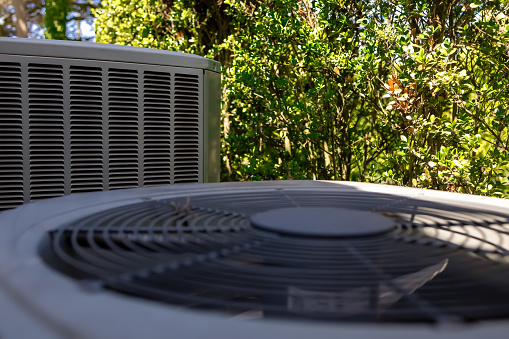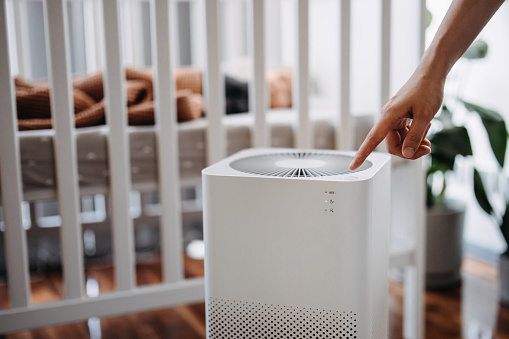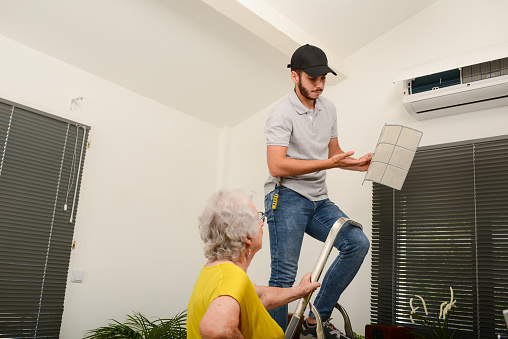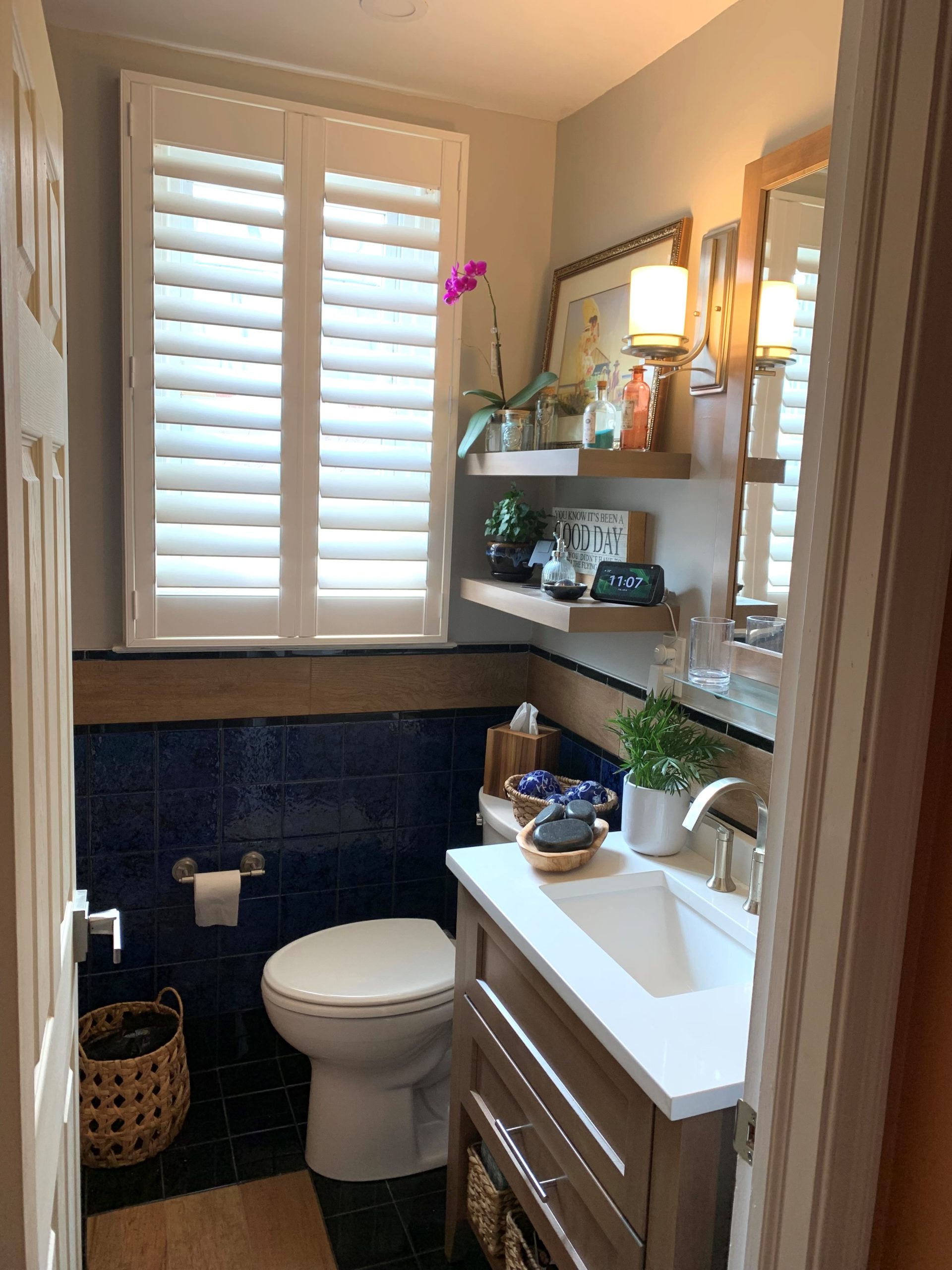Author Archives: 2010admin

Winter is coming… But as the temperatures drop and the heat comes on in your house, the last thing you’re probably thinking about is your Air Conditioning. In fact, you may have already gotten it ready for hibernation by throwing a cover on it. And you’ll open it back up again when spring has sprung. That’s the responsible thing to do, right?
Wrong.
It’s ok, you’re not the only one who thinks they’re supposed to cover their HVAC all winter long. But we are here to tell you to stop. There comes a time and a place to cover your unit, and it’s not the winter. Here’s what you need to know.
Why You Don’t Need a Cover for your HVAC
In theory, it makes sense to cover your AC unit to protect it from the harsh winter elements — especially in PA where the snow and ice can get pretty brutal. But in reality, modern HVAC units were built to withstand those elements and tested against extreme temps and precipitation. They’re made with durable metal finishes to withstand snow, rain, and heat, and have built-in drainage to get rid of melting snow and slush.
In fact, not only is protection not necessary, but it can also actually be harmful to your system. Here’s why:
- Covers lead to rust.
You may be thinking that a cover will help you keep precipitation out. But it actually does the opposite. Plastic covers, like tarps, are made of non-breathable materials that trap in moisture and condensation. As a result, the inner workings of your unit will become susceptible to rust and corrosion, which can ultimately cause major damage to your system and require replacement parts.
- Covers cause mold.
Similarly, any additional moisture that gets trapped under the cover creates the ideal conditions for mold and mildew growth. There is no real way to completely prevent precipitation from entering the unit, so the last thing you should do is prevent it from drying out with a cover.
- Covers attract critters.
Sure, a cover may prevent wild animals from nesting in your unit. But a snug, air-tight cover actually creates a nice, warm retreat from the cold for bugs, mice, and rodents — which is a lot more likely. These creatures can fit into much smaller spaces than you probably realize!
So when should you cover your air conditioning?
Wait. Before you go and throw that outdoor cover away, there actually is a better time to use it: the fall. Covering just the top portion of your unit can be very helpful to keep leaves, twigs, and other falling debris from getting lodged inside, preventing issues in the long run.
Just make sure the cover is breathable and doesn’t fully cover the sides of your unit (maybe 6 inches or so at most). This way, the top of your unit will be protected, while still allowing air flow to keep from condensation getting trapped inside.
What you should actually do to prepare your AV unit for winter.
If this advice is coming to you a little too late, and your unit has been exposed all fall, head out there and take a look. A good winterization plan includes inspecting your system for leaves, pine needles, branches, animal nests, and other build up. If you are noticing some debris stuck in your system, contact Madsen to schedule an annual maintenance and make sure it doesn’t become a bigger issue once spring rolls around!
And remain cognizant of icicles that may form surrounding your unit. If these heavy chunks of ice fall and land on the unit, they can cause serious damage. If they’re not removable, try placing a thick piece of wood or some sort of study top cover for protection.
If you have some questions about your HVAC or would like a professional to come out and take a look, contact Madsen Inc today. We’re happy to help properly protect your AC unit throughout the seasons and get it ready to run as efficiently as possible when you need it most!

Take a deep breath. Isn’t it nice when the air you’re breathing in is fresh and clean? Well, it’s not only nice — it’s essential for our health. But it’s possible that the air inside your home that you’re breathing in everyday is actually dirtier than you realize. In fact, according to the EPA, the concentration of certain pollutants is usually 2-5x higher inside than outside.
But sometimes removing the source of the problem isn’t always possible (you’re probably pretty attached to your pup). So instead, you have to focus on removing all the bad stu from your air once it’s there. And that means having an air purifier.
Don’t worry, we’re experts in this kind of thing — which is why we’ve created this helpful guide to help you understand, choose, and get the most out of an air purifier that ensures only the highest quality air in your home.
What is an Air Purifier & Who Needs One?
An air purifier removes allergens that are floating through the air (because once they’re settled on the ground, it’s your vacuum’s time to shine). Air purifiers using HEPA filters — with a very fine mesh — are certified to collect 99.97% of “hard-to-capture” particles, or those <0.3 micrometers in size. This could include pet dander, dust mites, particulate matter from cigarette smoke or burning, or viral droplets.
There are two main ways to purify your air: room-by-room or whole-house.
Portable air purifiers are designed to filter the air within a single room and function completely separately from your home’s heating, ventilating, and air conditioning systems. It’s a supplemental unit, functioning like a space heater helping to cure a pesky draft, while a whole-house air purifier or filter is integrated into your house’s system. A portable purifier is the least effective way to clean your air but can be a helpful addition where you need it to be.
Types of Air Purifiers & Filters
There are a variety of air purifiers that use dierent types of technology to help clean the air in your home — some safer and more eective than others.
Ozone-Generating Air Cleaners
Ozone is a colorless gas in the atmosphere that protects us from harmful ultraviolet solar rays, but it can also react with certain pollutants to change their chemical composition — which can be dangerous to indoor air quality. Ozone-generating air cleaners actually produce ozone to create chemical interactions that are meant to alter the compounds of pollutants. And while manufacturers will claim they produce safe levels of this molecule, some generators will quickly exceed the FDA’s limit. Too much ozone in the air can worsen asthma, bronchitis, and more. All the while, lower levels of ozone have been proven to be ineective in destroying indoor pollutants.
Electronic Air Cleaners
Ionizers, electrostatic precipitators, hydroxyl generators, and UV light are all types of electronic air cleaners. They use electric voltage to convert oxygen molecules into charged ionic components that make airborne contaminants inactive. In this process, known as bipolar ionization (BPI), negative and positive ions surround the air particles to destroy germs and pathogens, while the added mass helps the particles fall to the floor versus circulating throughout the home.
However, BPI can omit some ozone and other free-radical species as a bi-product, while also being less eective than other techniques.
Filtering Air Cleaners
Air cleaners that use a filtering process sequester any particles or gasses as the air passes through a filter, returning only clean air through the other side. There are several debates about the extent of which these filters can handle removing
larger particles, such as pollen, mold spores, animal dander, etc. But most of these particles don’t stay suspended in the air for long anyway, landing on surfaces of the home and becoming the responsibility of other home cleaners.
There are two main types of filters:
- Mechanical Filter
These purifiers use fans to push air through a web of fine fibers that trap harmful particles, removing them from the air flow. They can remove both microscopic particles and larger particles when suspended in the air.
HEPA (high eciency particulate air) filters are a type of pleated mechanical filter with a very fine mesh. They are rated for containment ability of 0.3 μm particles — or the most challenging size to capture — which means their eciency of capturing other size particles is higher than 99.97%. That’s hard to beat.
- Carbon Filter
These filters are activated by carbon in the air to capture odor-causing gasses, but they’re not the best fight against formaldehyde, ammonia, or nitrogen oxide. Since these filters are limited in the variety of particles they can remove, they’re often paired with a mechanical filter. They also get saturated faster than mechanical filters, which means they need to be replaced more often.
What to Consider when Choosing an Air Purifier
1. Cost of Replacement Filters
In general, you should replace pleated filters every six to 12 months and activated carbon filters every three months. But the cost of filters vary greatly, from $20 to over $200 — so do your research as to not only what works the best, but also what works in your budget.
2. Clean Air Delivery Rate (CADR)
Every air cleaning unit has an air volume limitation which is identified by
CADR, measured in cubic feet per minute (CFM). It indicates how much filtered air a cleaner delivers per unit time across three separate scores: smoke, pollen, and dust — representing dierent particle sizes. The higher the number, the faster the unit is able to remove pollutants. So shoot for as high as possible!
3. Energy Star Certification
Since air purifiers run around the clock, energy cost is a factor you have to consider as well. If your air purifier has an Energy Star certification, it ensures 40% more energy eciency than standard models.
4. Room Size
Association of Home Appliance Manufacturers (AHAM) recommends that the CADR of your air cleaner is at least two-thirds of your room’s area. So if your room is 180 square feet, the CADR should be at least 120. If your ceilings are taller than 8 feet, this will aect the recommended rating as well.
5. Particle Size
If you’re a smoker or have pets, you’ll want to consider the air purifiers that can handle the smallest particles, such as HEPA filters. If you know you have VOCs, which can result from new furniture, consider a carbon filter, since it’s most eective for cleaning these types of gasses. If you notice an odor in your room, you’ll want to ensure you take the best course of action to eliminate and control the source itself, and Madsen can help you develop a plan to do so. Contact us for an air filtration assessment today, and we’ll get to the bottom of it.
6. Noise
While performance is going to be your top determinate, noise should be a close second. Because having clean air shouldn’t come at the cost of your sanity. These machines will run constantly, so you want them to be quiet. Look for units that have around 50 decibels, which is equivalent to the sound of a typical refrigerator. This decibel level should be written on the model’s packaging or website.
Tips to Get the Most Out of Your Purifier
Once you’ve chosen the right purifier(s) for your home, there are also ways you can ensure it’s running eciently and performing at its very best.
- Clean or replace the filters regularly. A dirty filter isn’t going to help your purifier do its job. Remember, a good rule of thumb for replacement or cleaning (if yours are reusable) is six to 12 months, and every three months for carbon filters. Most filters will have an indicator light to help you know when it’s time.
- Be smart about placement. Even portable units can be dicult to move around, so if you only have one unit, make sure it’s being used wisely. Place it in the room you spend the most time (and breathe in the most air). Also make sure it’s in a spot where nothing is obstructing the airflow — like curtains or furniture — so you know it’s able to do its job.
- Adjust the speed. Similar to your thermostat, you can adjust your unit’s speed based on when you’re actually in the room. But in this case, due to the noise these units can make, you may want to turn it to its highest setting when you’re not in the room and lower it when you are. You can also buy an air purifier certified for a larger area and run it at a lower speed to be efective.
If you’d like to have a professional come assess your home’s air quality and make recommendations for your unique needs, or you’re simply looking for other ways to improve your air quality, contact Madsen today. Our experts are happy to help you make the best decision for your home or workplace.

We know, we know. Most of you are not scouring the internet for the latest HVAC trends and news. But as homeowners, you do care about how efficient and effective your system is. And like any other industry, the technology and solutions of HVACs are constantly changing and evolving. The good news is you don’t have to stay on top of — because as your trusted heating and cooling experts, we do it for you.
So to ensure you’re capitalizing on all the savings, sustainability, and performance that today’s HVACs can provide, check out the top trends this year.
Important HVAC Usage & Expense Stats
- 91% of US households have some type of air conditioning.
- Heating and cooling make up about 43% of a home’s utility bills.
- Nearly 29% of your home’s energy costs come from heating.
- Households spend 35%–42% more on electricity bills when they own air conditioners. (actual increase depends on weather conditions and location)
- Air conditioners account for 6% of electricity usage at an annual cost of $29 billion to homeowners in the US.
1. Systems are Getting Smarter
It would be nearly impossible to name an industry that hasn’t been impacted by advancing technology, and HVAC is seeing that big time. The infiltration and evolution of smart home products show no sign of slowing down, with forecasts showing 68.6% of homes will have this technology by 2027 (compared to 56.62% in 2022).
As part of that growth, more and more homeowners are opting for smart thermostats or smart AC controllers to save on their energy bills. The residential sector leads the market share at 71.9%, with 8 out of 10 homeowners with smart thermostats likely to buy another device in the future.
And this product satisfaction makes total sense — given smart thermostats (EnergyStar) save 8% on heating or cooling or $50/year on electricity bills, or up to $100/year for larger homes or those often unoccupied for most of the day.
Even further, as more and more HVAC units are being connected to Wi-Fi to be controlled by portable devices, sensors can also be placed on HVAC equipment, allowing the entire system to communicate and respond to data. This means users won’t even have to adjust their air conditioning, their HVAC network will do it for them. It can also detect occupants and outdoor conditions to automate heating and cooling in real-time, ensuring optimal comfort with zero effort.
2. They’re also Getting Greener
With CDDs (cooling degree days) increasing in 95% of cities since the 1970s, and global energy demand expected to almost triple by 2050, the use of energy efficient systems is also expected to rise to offset the environmental cost.
This goes beyond just smart technology and thermostats to the main source of energy fueling heating and cooling systems. The demand for solar-powered HVACs is increasing in residences, while companies are looking to build hybrid energy sources, including solar and wind power for larger scale systems.
More homeowners are also willing to pay more for these eco-friendly products, including 46% of Baby Boomers and 61% of Millennials. But that also comes with a nice return.
High-efficiency HVAC systems — such as variable refrigerant flow (VRF) systems, geothermal heat pumps, and dual-source heat pumps — can cut the annual energy bill by nearly $140. And installing an advanced unit can result in a payback in 5 to 7 years in operating costs — all this while cutting future cooling demand by 45%. A win, win for homeowners and the environment.
3. Ductless Solutions are More in Demand
Older buildings pose a nearly impossible, and extremely expensive, task when it comes to updating their AC, especially when the structure doesn’t already have ductwork in place. And if there are ducts, it’s a less than perfect system, likely plagued with gaps and leaks, leading to endless repairs.
As a proactive solution to these issues, more HVAC technicians are turning to ductless technology. Thanks to their smaller size and greater flexibility for heating and cooling individual areas, ductless mini-split heat pumps are a great option for both a retrofit install and extending current system distribution into a new addition.
From easier installs to fewer energy losses, ductless solutions are becoming more popular in homes and new construction.
4. Customer Experience is Changing
As technology and sustainability change the way our systems cool and consume, customer expectations are changing along with it. Greater understanding of these technologies and capabilities means gone are the days where good work and competitive pricing will cut it. Competition within the industry is only increasing, and the difference maker will come from the type of customer service they provide.
Companies are now forced to ensure their technicians are trained in the latest technological advances to streamline services and meet the expectations of today’s tech-savvy homeowners. And with online testimonials, social media comments, and websites now playing a major role in consumer decision-making, having a strong online presence and reputation is vital.
These expectations also include delivering immediate, on-going attention to their customers. There’s been a rise of electronic communications to schedule appointments, send reminders, deliver invoices, and more. Field service management software is facilitating calendar syncing, cost tracking, and profit analyzation to ensure smoother operations that translates to better customer service.
Stay Cool & Current with Madsen
When it comes to all your HVAC needs, you never have to worry with Madsen. We stay on top of all the newest technology and solutions to ensure we can deliver the industry’s very best for our customers. Whether you’re looking to learn more about the latest HVAC technology, increase your energy efficiency, or simply get the best customer service in the area, contact us today.

Pennsylvania summers can be brutal. We get it — we dislike being sweaty as much as the next person. But when your AC is running as it should, there’s no reason your home shouldn’t be the ideal escape.
With today’s average utility bills are higher than ever, the last thing you need is to be spending unnecessarily to keep cool. And staying comfortable in the summertime requires your HVAC to be running at its best. Because when it’s not, it has to work extra hard to maintain your desired temperature. Or you’re simply stuck sweating it out.
Want to make sure your system is running as smoothly as possible so you can keep some more cash in your pocket for summertime fun? We’ve got five signs to look out for to make sure your HVAC is running efficiently.
- Your Unit Runs Constantly
When your home hits the right temperature, your system should shut off. That’s a key component to being efficient. But if it ever seems to do that, then it’s not able to handle the thermostat’s demands. It will continue to run and pump out air in an attempt to get there. But instead, it’ll overwork and most likely lead to frequent breakdowns. The result: costly repairs on top of higher utility bills. Pay attention to whether or not your unit runs all day long.
- It’s Making Weird Noises
A noisy AC unit is usually not a good sign. But different sounds mean different things, which can actually be helpful. For example, if it sounds like banging, it’s probably a loose part or component. If you hear clicking, something may be lodged inside. Squealing sounds usually indicate friction, while a high-pitched noise may mean a worn out motor or belt. Any of these issues can hinder your AC’s performance. As your AC ages, more issues are likely to occur, so it’s important to keep at least one ear open so you know when it’s time to schedule a repair or replacement.
- Temperatures Fluctuate & Vary Throughout the House
If your unit is running as it should, there should be an even cool throughout your home. If certain spaces have hot and cold spots or the temperatures fluctuate at times, it may be a sign of airflow blockages. This could mean your air filter needs to be replaced. Or you just need to ensure all vents are open and allowing the air to pass. Natural light from windows or heat from appliances can obviously cause temperatures to vary at different times of day, so try closing blinds or using smaller appliances on hotter days. But if it’s happening regularly, it’s definitely a system issue.
- You Need Constant Repairs
If you can relate to this one, then it’s pretty clear your AC isn’t doing its job. You shouldn’t be calling a professional constantly to stop weird sounds or fix temperature issues. We know the thought of buying a new unit is daunting, but the time and money spent on constantly fixing an aging unit — on top of the higher bills you’re likely paying as a result — just isn’t worth it. Stop putting band aids on the problem and get a unit that really works for you.
- You Notice the Difference in Your Utility Bills
Last but not least is both a sign and a reason to make sure your HVAC is running as efficiently as possible: your bills. Some system issues don’t make an obvious impact on your utility costs, but often, the consequences are staring you right in the face. If every time your bill arrives, you’re venting about how ridiculously high it is, it may be something more than the results of a tough economic climate. When a unit has an issue or is nearing the end of its lifespan, it starts becoming less efficient, meaning it works harder to cool your home. The harder it works, the more you pay. So if you notice your bills have really skyrocketed, you should get it checked out.
How to Keep Your HVAC Running More Efficiently
In addition to looking for the signs of an inefficient unit, you can also take some action to prevent the issue in the first place. Make sure your system and ductwork is clean and free of dirt and debris. Change your air filters regularly or invest in reusable ones that you clean once a month. And set your thermostat to reasonable temperatures. Sometimes, when we’re eager to get cool or heat up, we set our temps to way higher or lower than we actually want, causing an extra push from our unit. This can weaken your unit overtime. Set it to a normal temperature, and let it work its way there gradually.
Work with a professional HVAC company to ensure you’re covering all the bases. Regular maintenance checks can help you avoid the guesswork of whether or not your unit is running as efficiently as it should be and prevent bigger issues long term. To work with the very best in our area, contact the experts at Madsen Inc. We’ll help you keep cool and save money all summer long.

Your bathroom is the one room in your house you can’t go a day without. So why do we choose to ignore it?
At Madsen Inc, we’re making bathroom talk socially acceptable by recognizing all the ways this room can totally change your everyday relationship with your home. From pampering yourself in the morning to getting the kids cleaned up before dinner, it’s time to give your bathroom a little TLC so it can start returning the favor!
Here are 5 reasons to finally make that bathroom remodel a reality.
1. Increase the Value of Your Home — Big Time
For all you home reno TV lovers out there, get this: HGTV reports a minor bathroom remodel can yield up to 102% return at resale, while a mid-range bathroom remodel typically results in $1.71 increase in home value for every dollar spent, according to Zillow. So if you’re thinking of selling in the near future, it’s really a no-brainer. But even if you’re not, bringing your bathroom up to the 21st century and taking care of necessary plumbing repairs is a sure way to make your home more attractive to potential buyers, while enjoying all the updates for yourself in the meantime!
But keep in mind, if this is the biggest incentive driving your bathroom remodel, make sure your decor and style choices are ones with lasting value. Not every hot trend now will pay off the same in the future.
2. Make Your Daily Routines Easier
Everyone has different visions of the perfect bathroom. It’s possible yours was designed to the ideals of its previous owners, not yours. Or maybe your needs have changed over time. Whether your family is growing, your kids have grown up, or the in-laws are moving in, remodeling your bathroom to be more functional for you and your family can give you back time in your day — and hair on your head.
Add storage, increase the square footage, install His & Her sinks, add heating flooring; the possibilities are endless. So if you’re sick of constantly trying to make it work in your space, it’s time to make your space work for you.
4. Increase Energy Efficient, Enjoy More Savings
The best part about making any room in your home more energy efficient is that while you’re helping the environment, you’re also saving money. Win, win. Major advancements in technology and eco-friendly designs over the last few years have changed home systems and appliances for the better. Integrating smart thermostats, occupancy sensors, or water monitoring systems into your design can give you more control over your energy use, while energy-efficient exhaust fans, on-demand water heaters, and low-flow shower heads, faucets, and toilets all reduce the use of water, heat, and air to lower utility costs.
Here’s a helpful stat to put things into perspective: a 30-year-old toilet used 3.5 to 6 gallons of water per flush, while newer, more efficient toilets use just 1.28 gallons. That’s a difference you’ll notice immediately on your water bills.
5. Design a Room You Love — and Loves You Back
While it may be the smallest room in the house, your bathroom is also one of the most used. So as much as we try to overlook it, investing in your bathroom can have a huge impact on how you use it — and how you feel when you do! A complete refresh can turn an outdated bathroom you only use when you have to into a relaxing escape that you can’t wait to get into!
More counter space and a designated make up area or walk-in closet can make getting ready more enjoyable, while a soaker tub, towel heater, or steam shower can transform a bathroom into a resort-like spa. Reduce stress and anxiety with calming light fixtures, make clutter disappear with smarter storage, and choose colors and textures that will help you relax. Instead of booking spa days, invest in every day.
6. Create a Safer Space for the Whole Family
Whether you realize it or not, the bathroom can be a dangerous place! Wet, slippery floors will claim victims of any age. In fact, falls are the number one cause of accidental injuries and result in more than 20% of emergency room visits (National Floor Safety Institute). Older bathrooms also present a handful of safety risks — from uneven floors, mold and mildew, electrical issues, and more.
With a bathroom refresh, you can integrate safety-focused features like grab bars, hands-free faucets, anti-slip flooring, and more to help minimize the risks. Plus, newer walk-in showers and tubs, handheld shower heads, and adjustable height vanities not only add safety and ease, but they’re also a great style choice, and add a feeling of modern luxury that you deserve!
Come to think of it, we can’t find a good reason for you not to pursue a new bathroom remodel! While the benefits are endless, having the right team to turn your visions into a reality is key to getting the most out of each one! Contact the experts at Madsen Inc to discuss your bathroom wish-list today!


